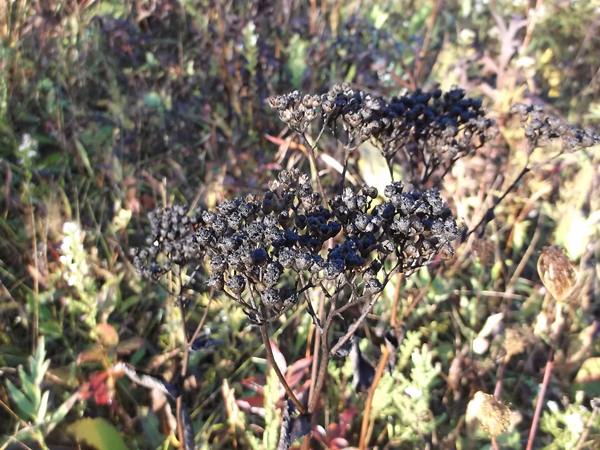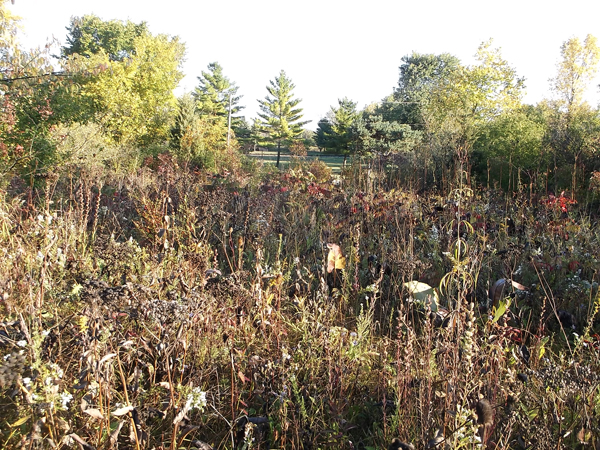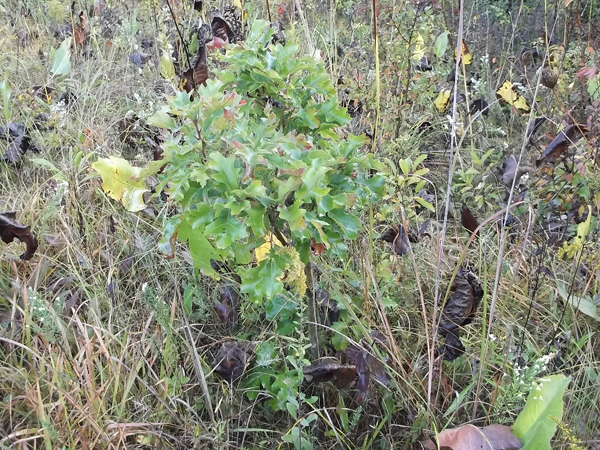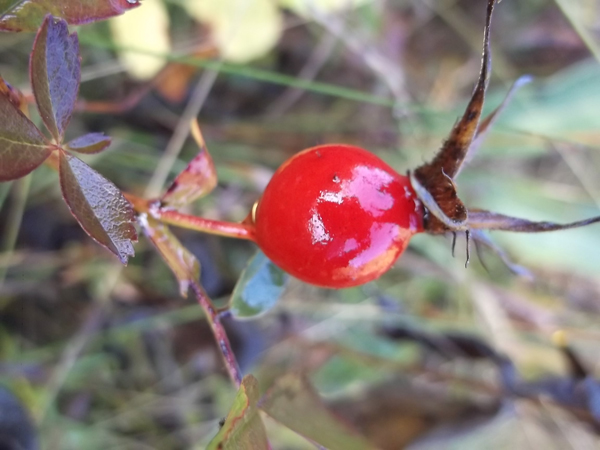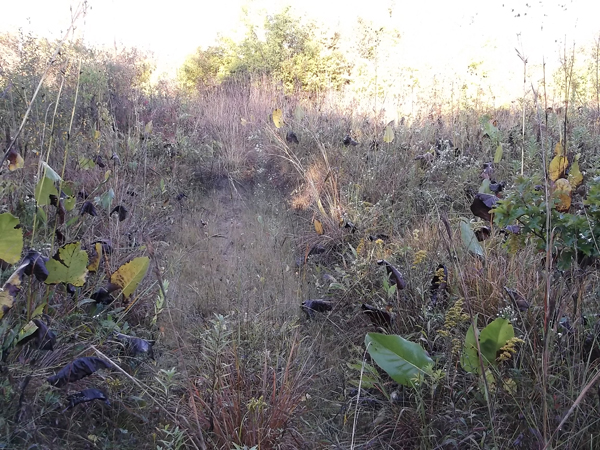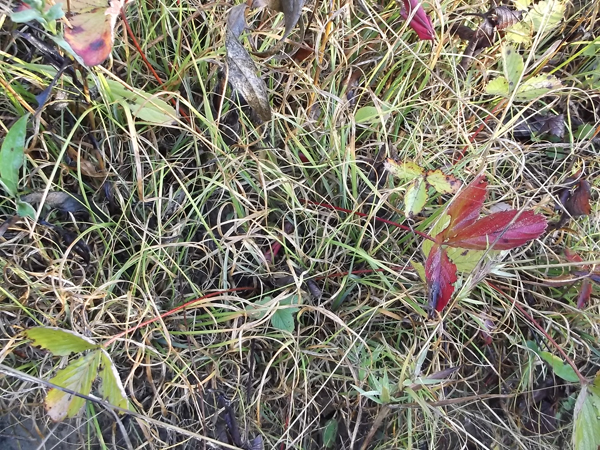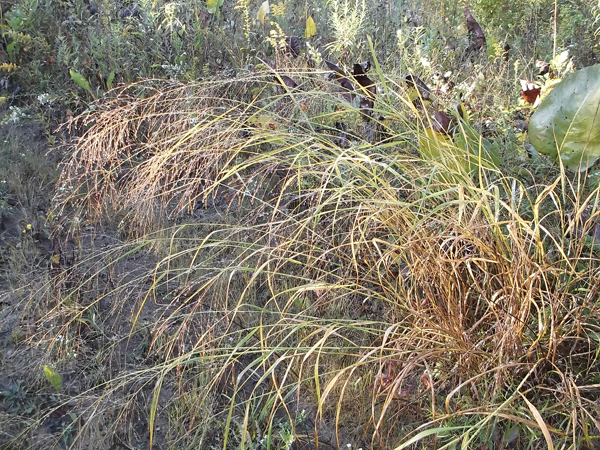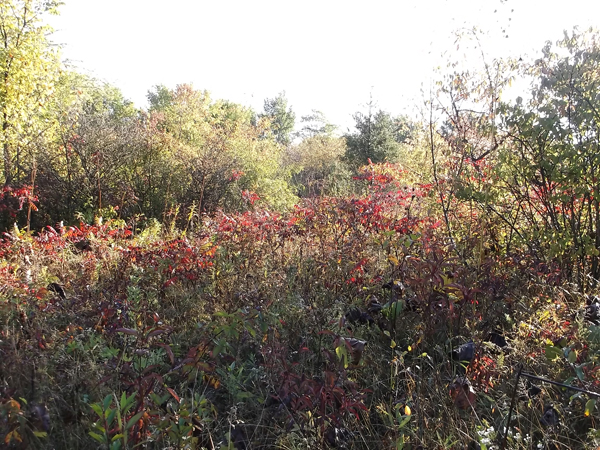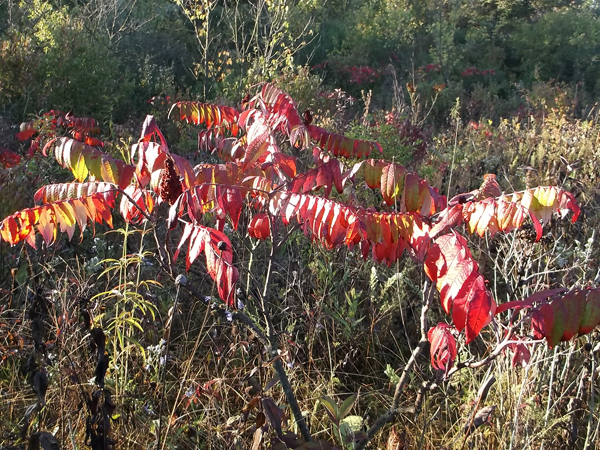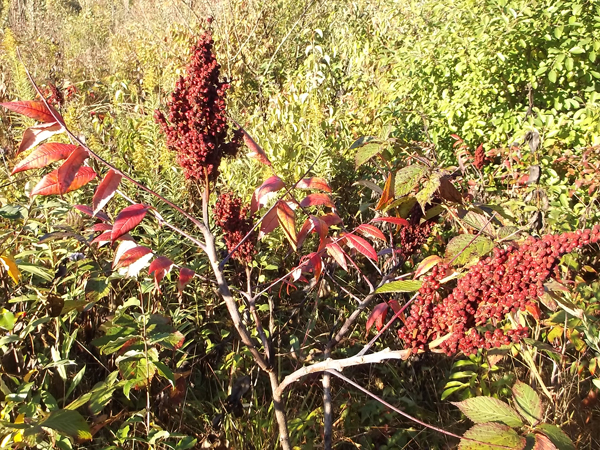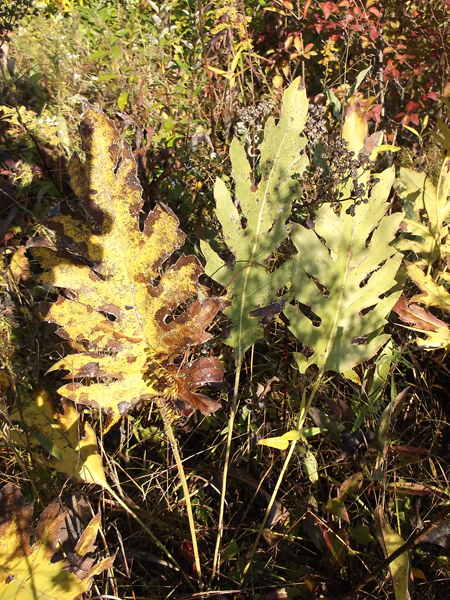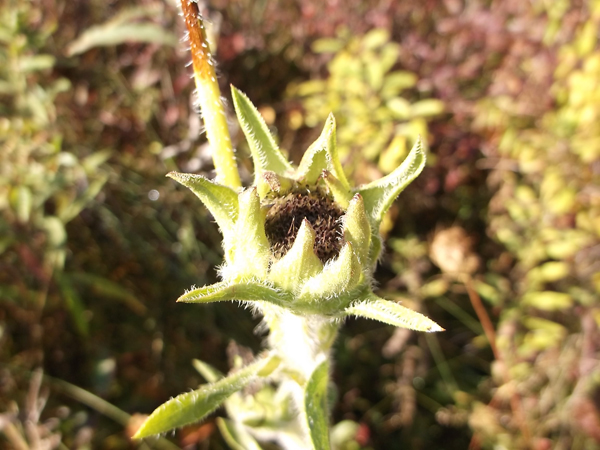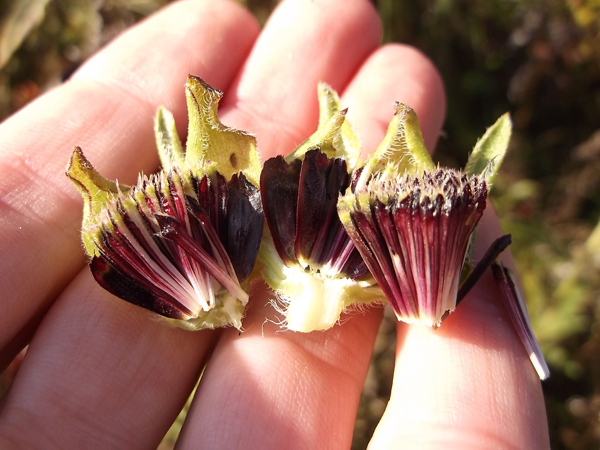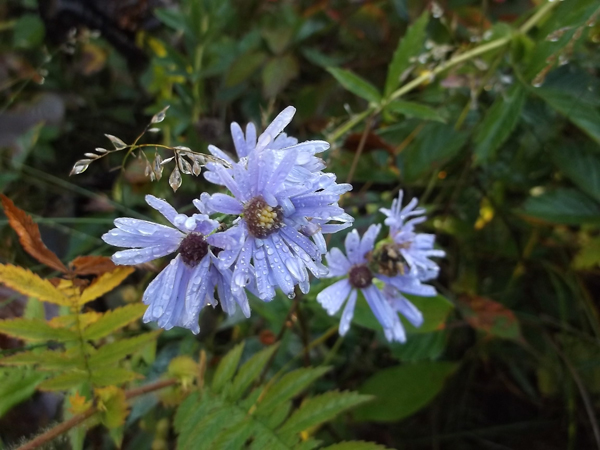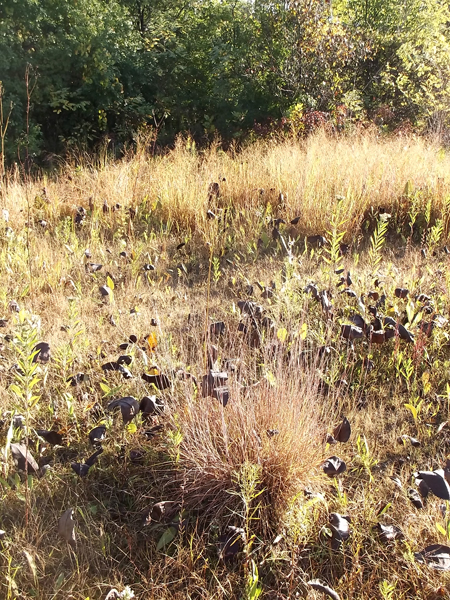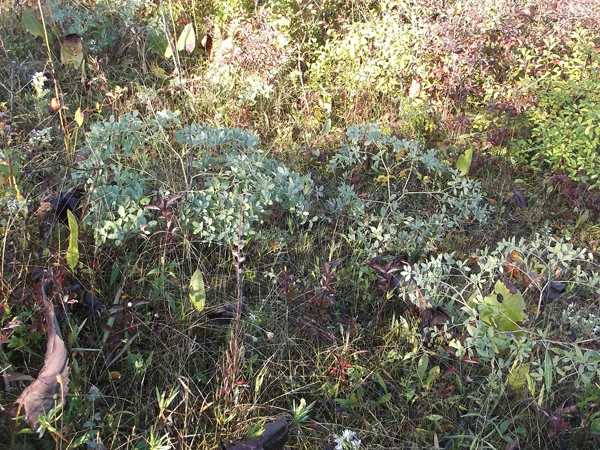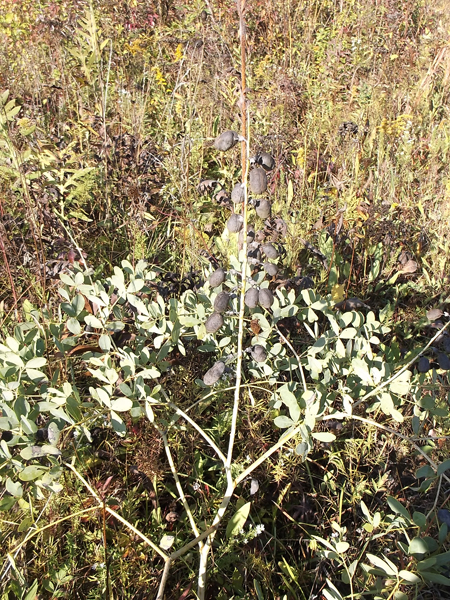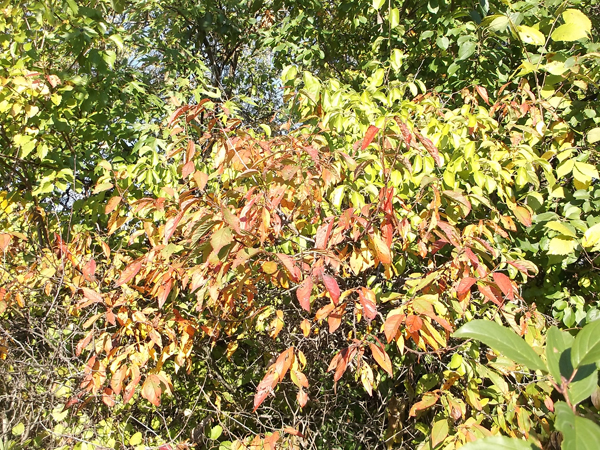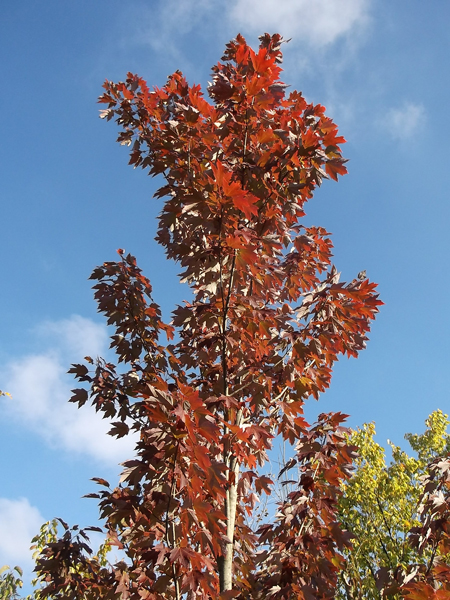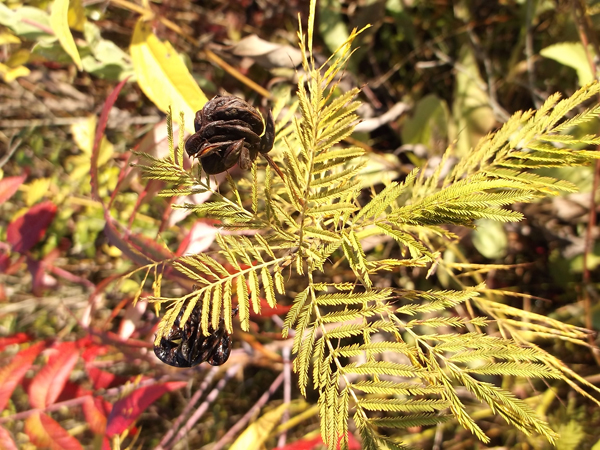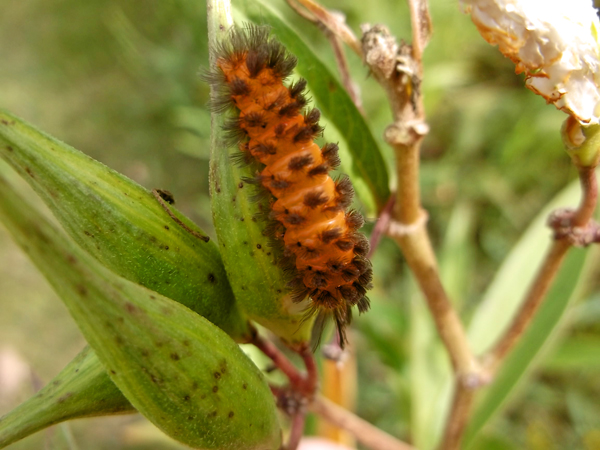
Unexpected Tiger Moth larva, with its gray tufts and orange skin, found in my backyard meadow
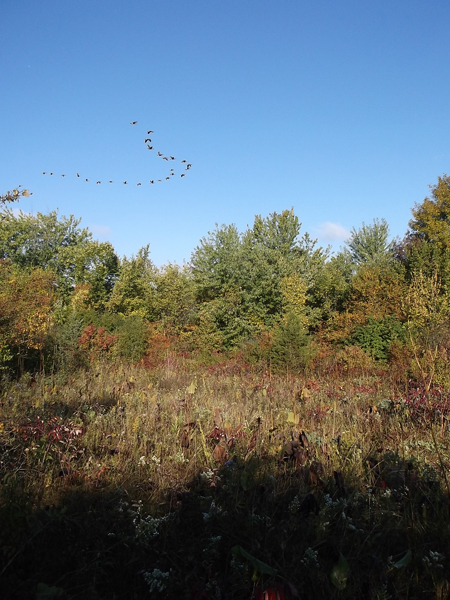 This past Sunday morning, I took a walk to a prairie remnant near my home. Somehow, it escaped the plow and other development to still be with us today - very unusual in this part of Chicagoland. At one time this ten acre parcel was part of a golf course, subdivided into tiny lots - but never "improved" with roads, etc. At one point, the land went into tax default and subsequently up for auction. The adjacent town of Crete purchased the property and wanted to annex the unincorporated land in to their town. Crete's neighbor, the town of Steger said that it was already part of their town, so bugger off Crete. The Great Recession of 2008 caused a detente over rights to this taxable plot of land, which is one reason it still is open land, full of bird life and a rare example of prairie plant and fauna biodiversity.
On one of my walks, I saw a rare green Grass Snake - not much bigger than a pencil. Pretty cool, and so is the prairie remnant. Maybe Crete and Steger will realize, one day, that its best use would be as preserved green space, not houses, not a strip mall, and not green space as in ball fields either - a park can be more than ball fields and play equipment - in this case it could be a place for adventure, learning, and relaxing.
So while we still can, let's enjoy the rare beauty of the Midwestern landscape:
This past Sunday morning, I took a walk to a prairie remnant near my home. Somehow, it escaped the plow and other development to still be with us today - very unusual in this part of Chicagoland. At one time this ten acre parcel was part of a golf course, subdivided into tiny lots - but never "improved" with roads, etc. At one point, the land went into tax default and subsequently up for auction. The adjacent town of Crete purchased the property and wanted to annex the unincorporated land in to their town. Crete's neighbor, the town of Steger said that it was already part of their town, so bugger off Crete. The Great Recession of 2008 caused a detente over rights to this taxable plot of land, which is one reason it still is open land, full of bird life and a rare example of prairie plant and fauna biodiversity.
On one of my walks, I saw a rare green Grass Snake - not much bigger than a pencil. Pretty cool, and so is the prairie remnant. Maybe Crete and Steger will realize, one day, that its best use would be as preserved green space, not houses, not a strip mall, and not green space as in ball fields either - a park can be more than ball fields and play equipment - in this case it could be a place for adventure, learning, and relaxing.
So while we still can, let's enjoy the rare beauty of the Midwestern landscape:
